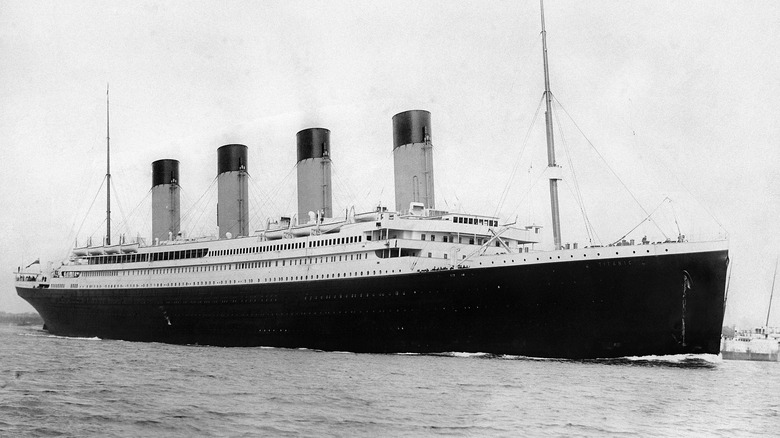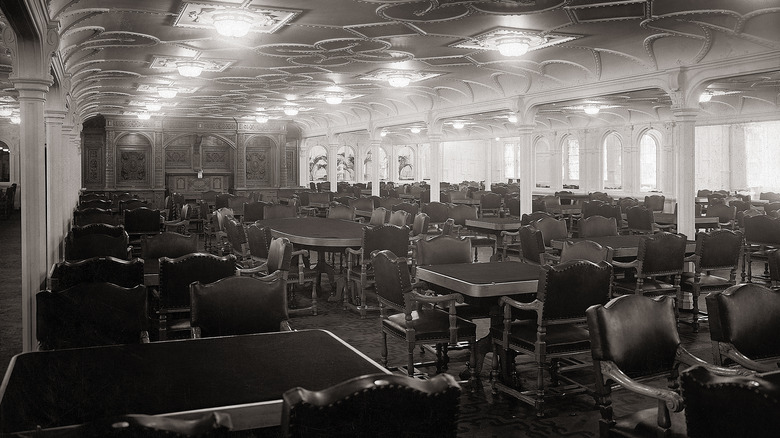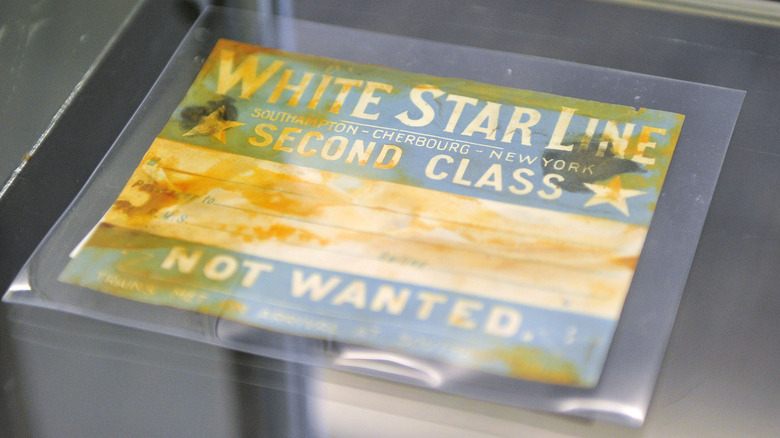The Last Meal Of The Titanic's First-Class Passengers
The wreck of the RMS Titanic endures as the most infamous maritime tragedy in history, claiming roughly 1,500 lives as it sank below the frigid waters of the North Atlantic. Countless books, articles, documentaries, and movies have relayed what happened on the night of April 14, 1912; but in our obsession over the Titanic passengers' deaths, we often overlook how they lived.
The Titanic was the subject of international fame long before it sank. Hailed as one of the largest and most luxurious ships ever built, its passengers included some of the wealthiest people in the world at the time, including John Jacob Astor IV, Benjamin Guggenheim, and Isadore Straus, the owner of Macy's. Captain Edward Smith was even known as the "Millionaire's Captain" because of his ties with the wealthy.
These fabulously rich passengers stayed in the Titanic's opulent first-class quarters, where a suite cost £870, which translates to a stunning $133,132 in today's dollars. Tickets included meals in the ship's first-class dining hall, where diners could enjoy as many as 13 courses for dinner, each one accompanied by a different wine pairing. A few menus from this dining room survived the wreck (later selling for a staggering amount of money), so we know exactly what those first-class passengers ate for their last meal. It seems that the Titanic's dining room would have held its own against any of the world's finest restaurants.
The first-class menu was the epitome of luxury
A dinner menu from the night of April 14 reveals that the first-class passengers aboard the Titanic ate an extravagant dinner, beginning with assorted hors d'oeuvres and oysters. They then had a choice of soup between cream of barley and consommé Olga, a soup made from veal stock and sturgeon marrow. This was followed by salmon with mousseline sauce. It sounds like a well-rounded meal already, but the Titanic chefs were just getting started.
For entrees (that's right, the salmon was an appetizer course), guests could choose between filet mignon, chicken lyonnaise, lamb with mint sauce, roast duck, or beef sirloin with chateau potatoes. There was also a vegetarian option: vegetable marrow farci (marrow is a type of summer squash native to England). An array of side dishes were offered, including peas, carrots, and rice. After their entrees, guests were served a palate-cleansing punch followed by roast squab, asparagus, and foie gras. For dessert, there were peaches with jelly, vanilla and chocolate eclairs, French ice cream, and Waldorf pudding.
The first-class lunch that day was almost as opulent. The midday menu included mutton chops, roast beef, ham, ox tongue, custard pudding, a cheese course, and a rather intriguing chicken and banana dish. This was fine dining at its most indulgent.
What the other passengers ate
The ship was divided into three classes to match the economic hierarchy: the upper, the middle, and the lower class. The Titanic was among the first ocean liners to include a second class, reflecting the newly-formed middle class that emerged at the tail end of the 19th century. Of the 1,317 passengers aboard that voyage, only 324 were in first class. The 284 second-class passengers and 709 third-class passengers ate very different meals.
The second-class dinner on April 14 wasn't as luxurious as the first-class fare, but it was still a gourmet meal. There was only one soup offering — consommé tapioca, and the entree choices included curried chicken, lamb with mint sauce, and roast turkey with cranberry sauce (sorry vegetarians, but there was no meat-free dinner option below first class). There were many options for dessert, including plum pudding and wine jelly, but the ice cream served to second-class passengers was explicitly American rather than French.
Third-class passengers had a very different experience. Their day was divided into four meals: breakfast, dinner, tea, and supper. Breakfast was hearty, with oatmeal, smoked herring, ham and eggs, and fresh bread. The dinner entree was roast beef with rice soup and boiled potatoes, while supper consisted of cheese, cabin biscuits, and gruel. It was hearty food, but it couldn't have seemed like much when the guests in first class were feasting on multiple meat courses for every meal.


